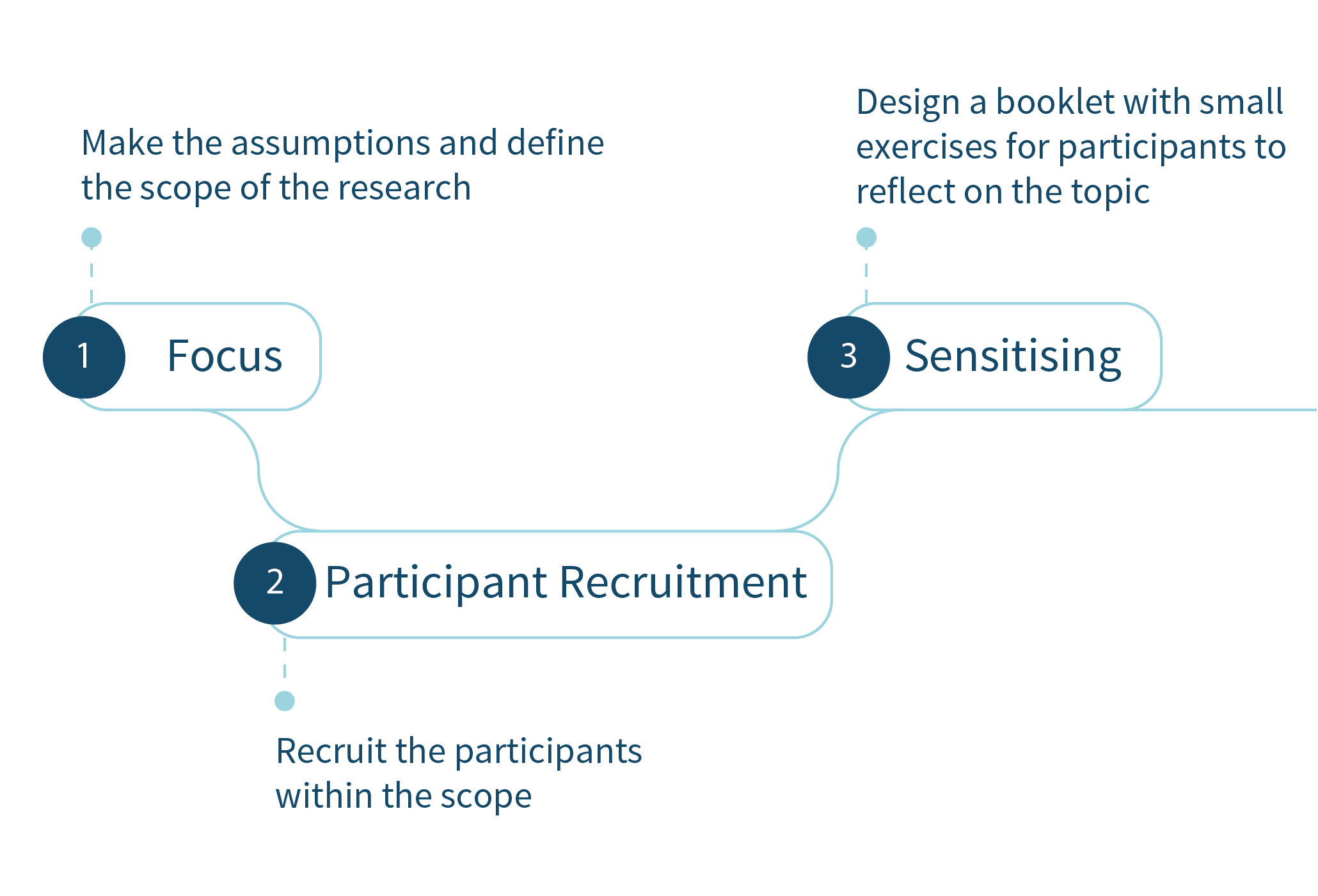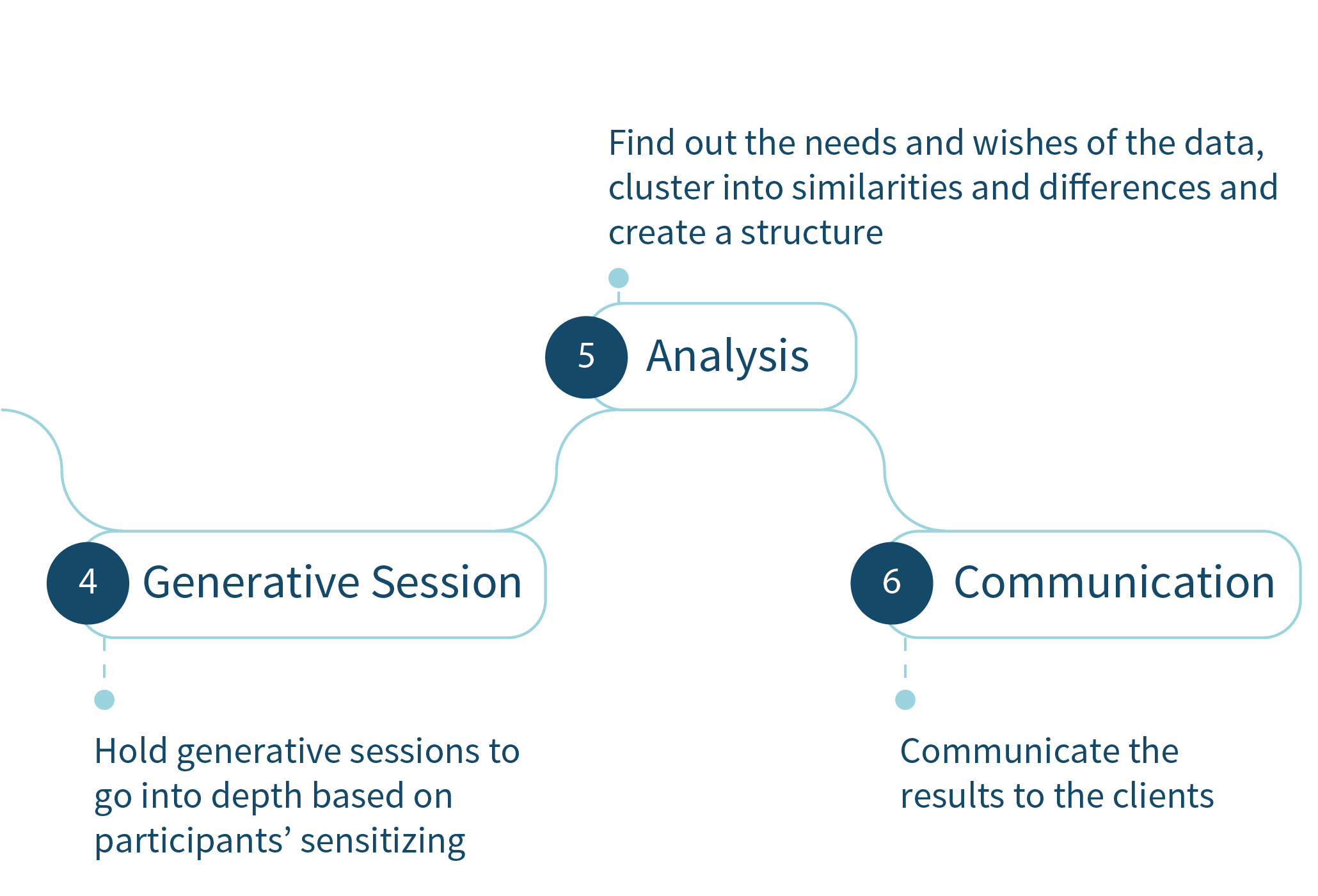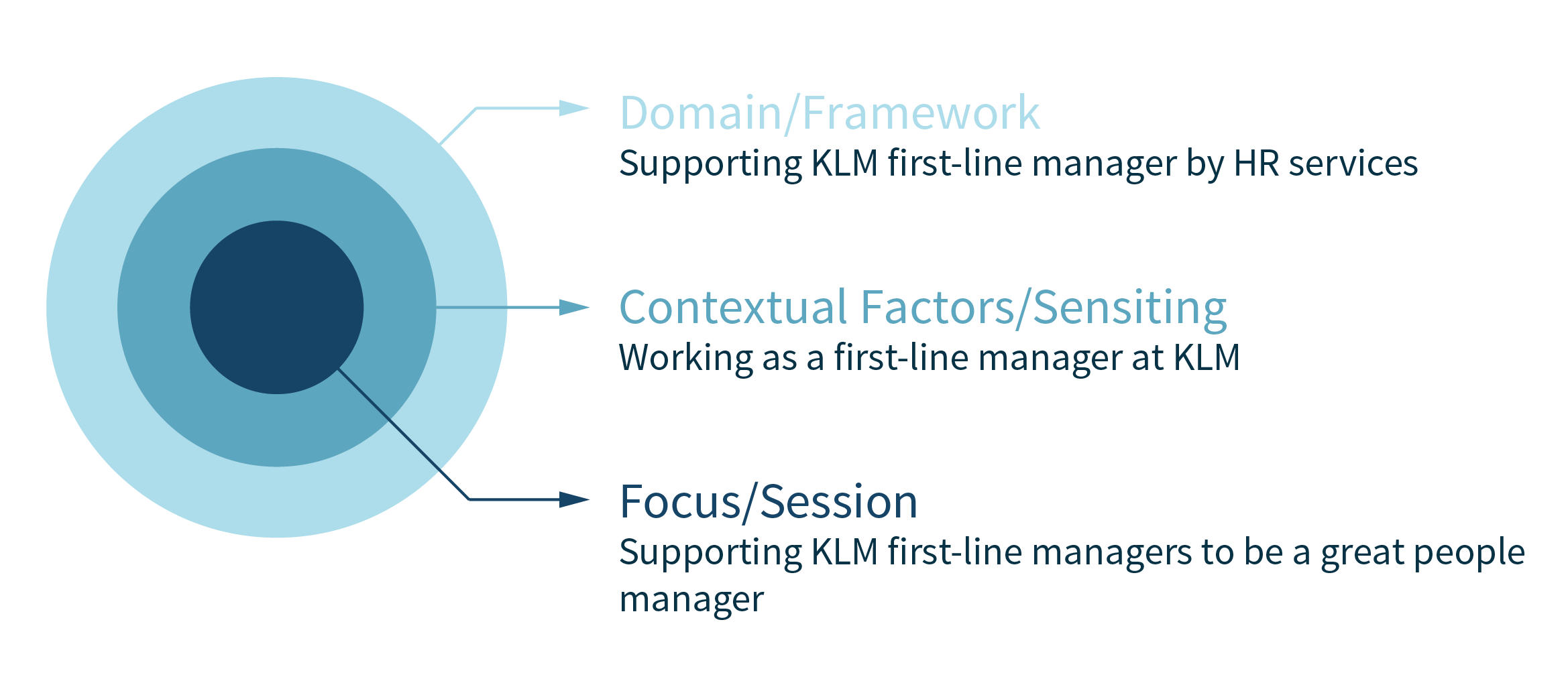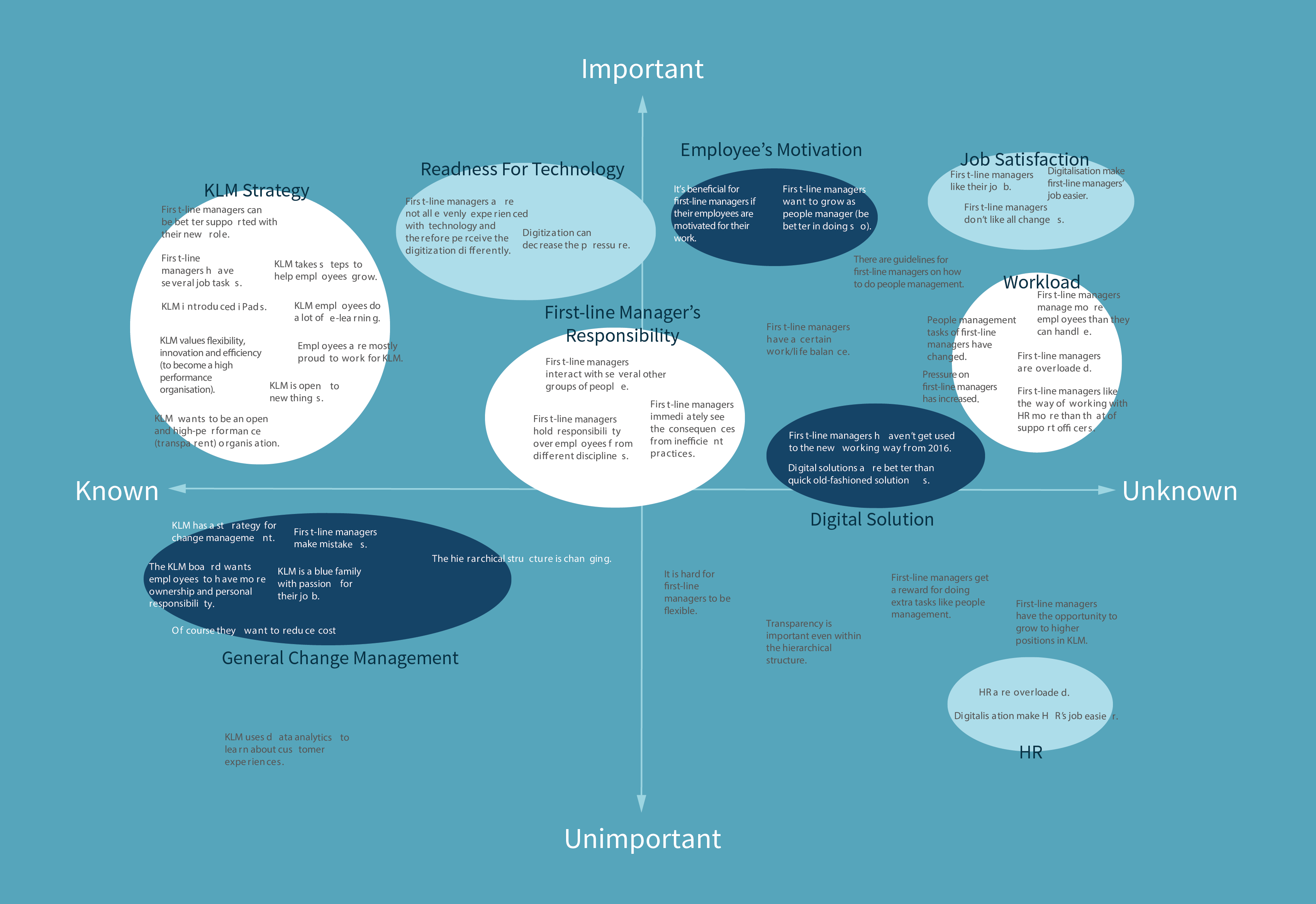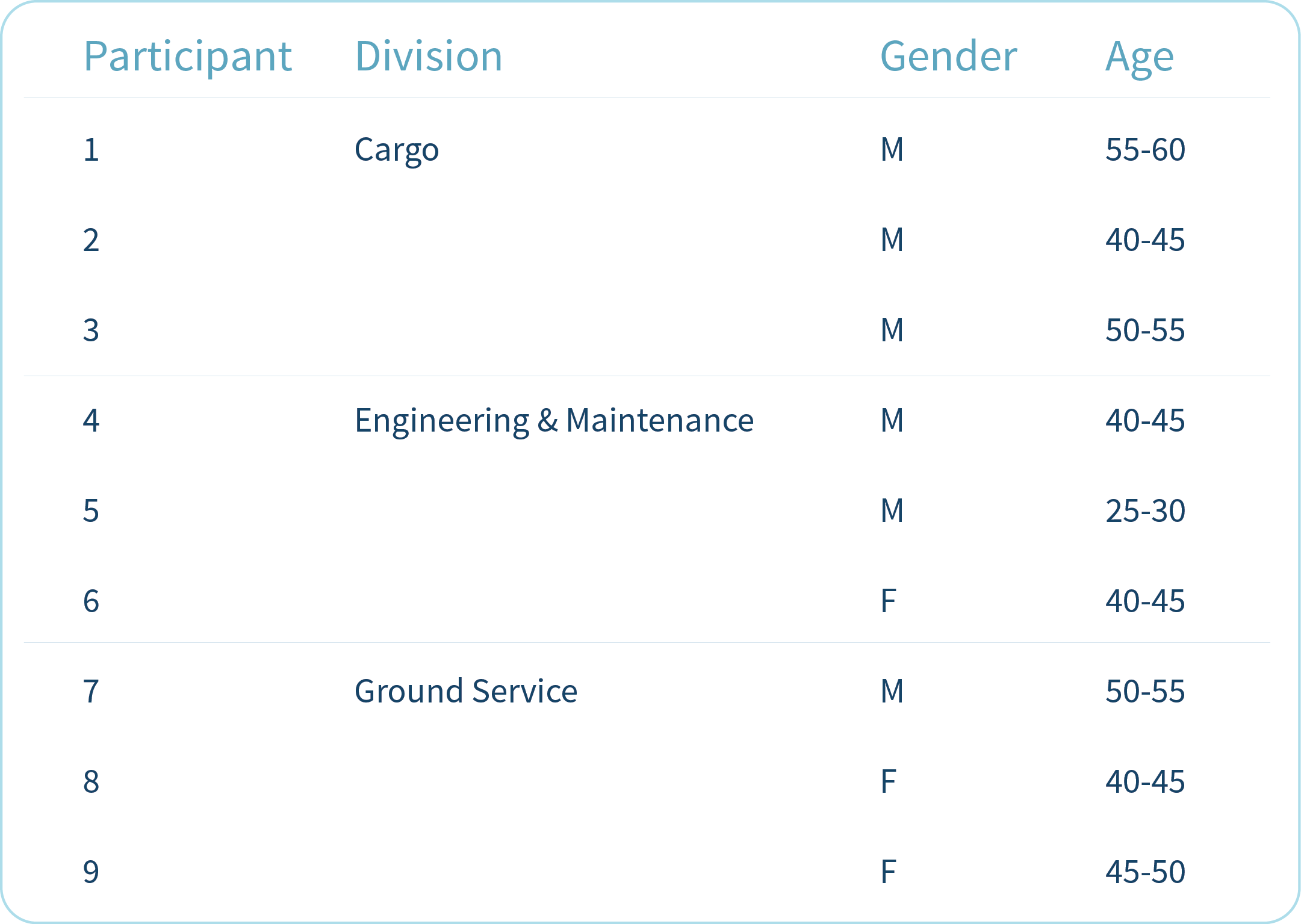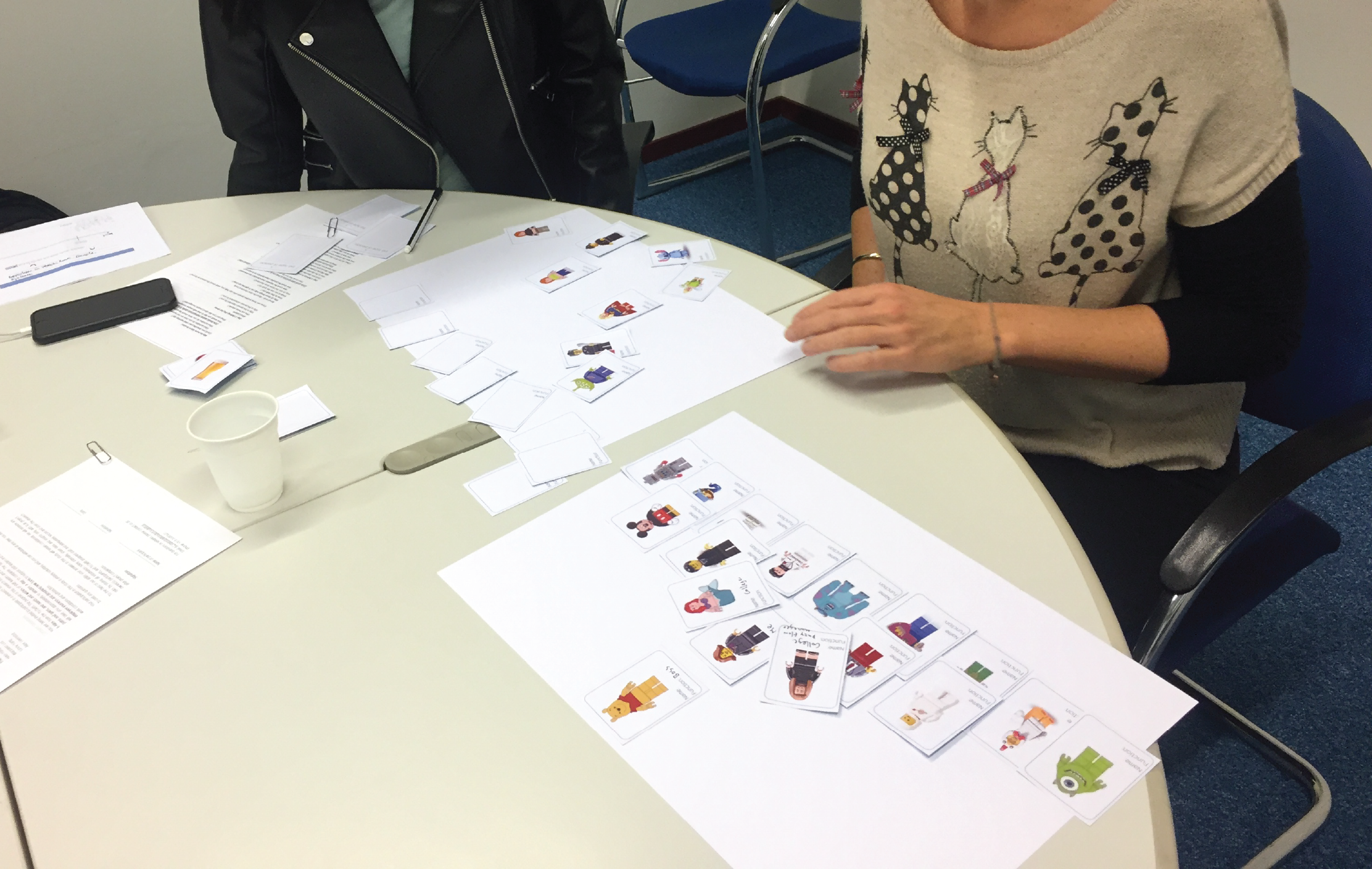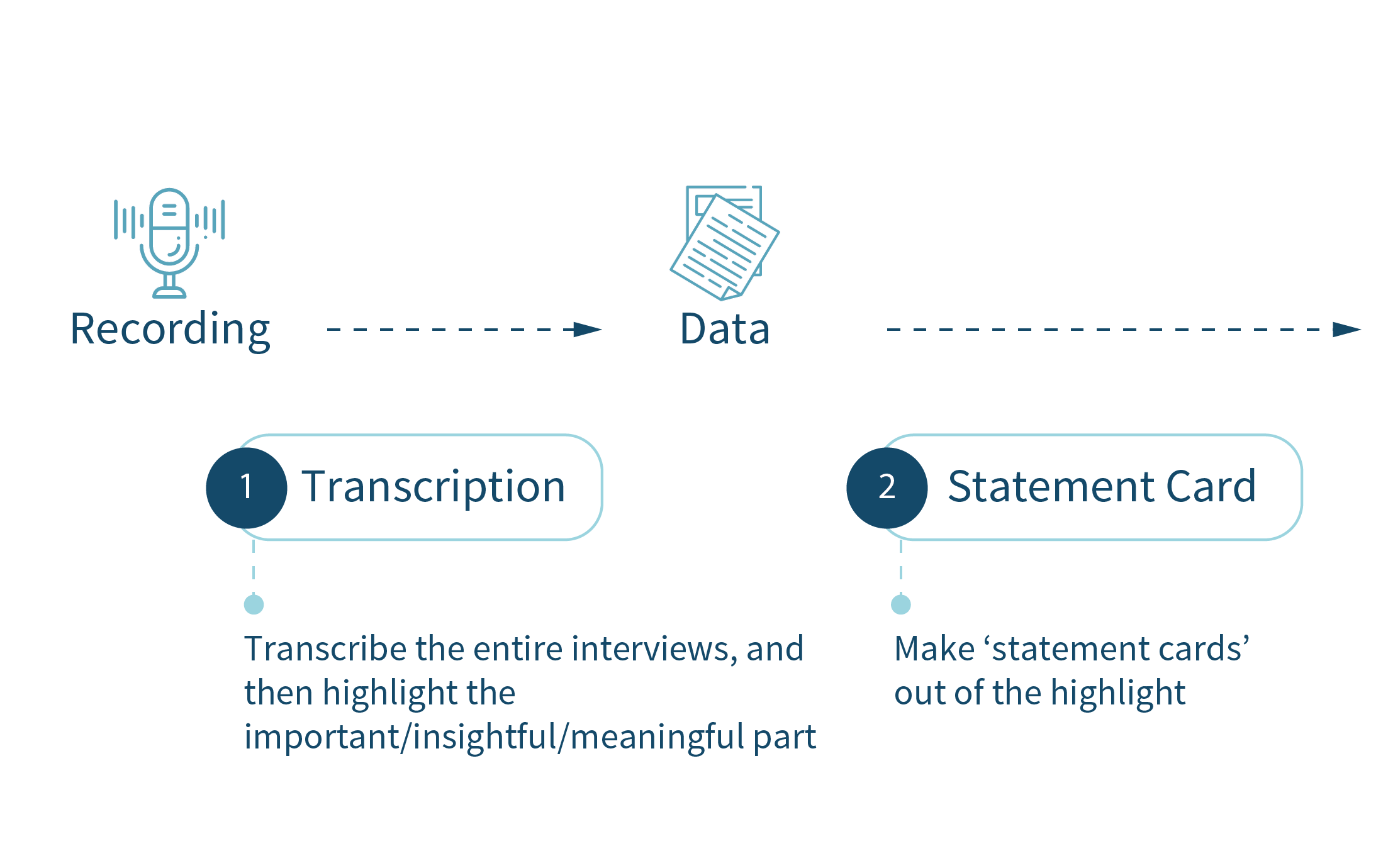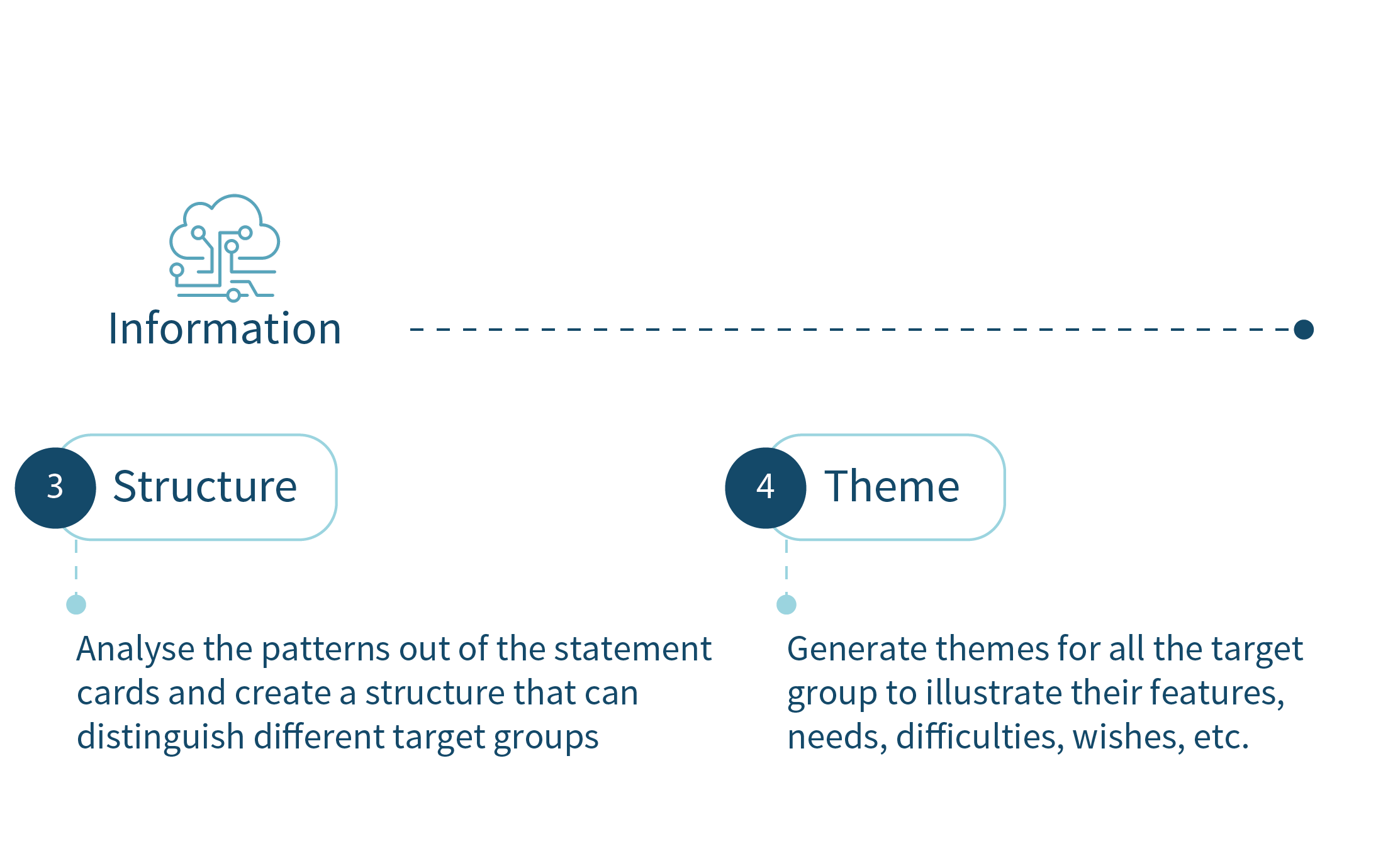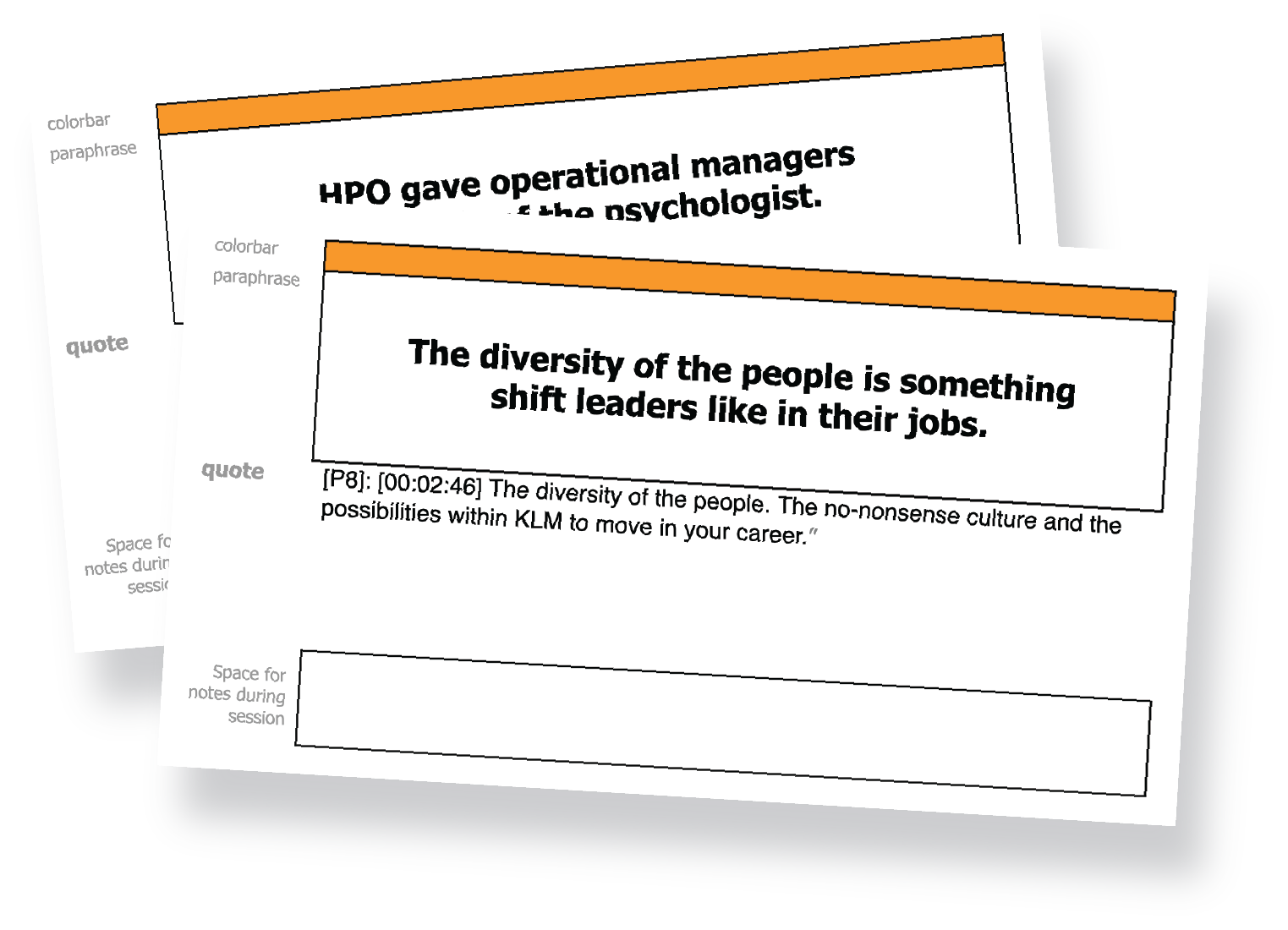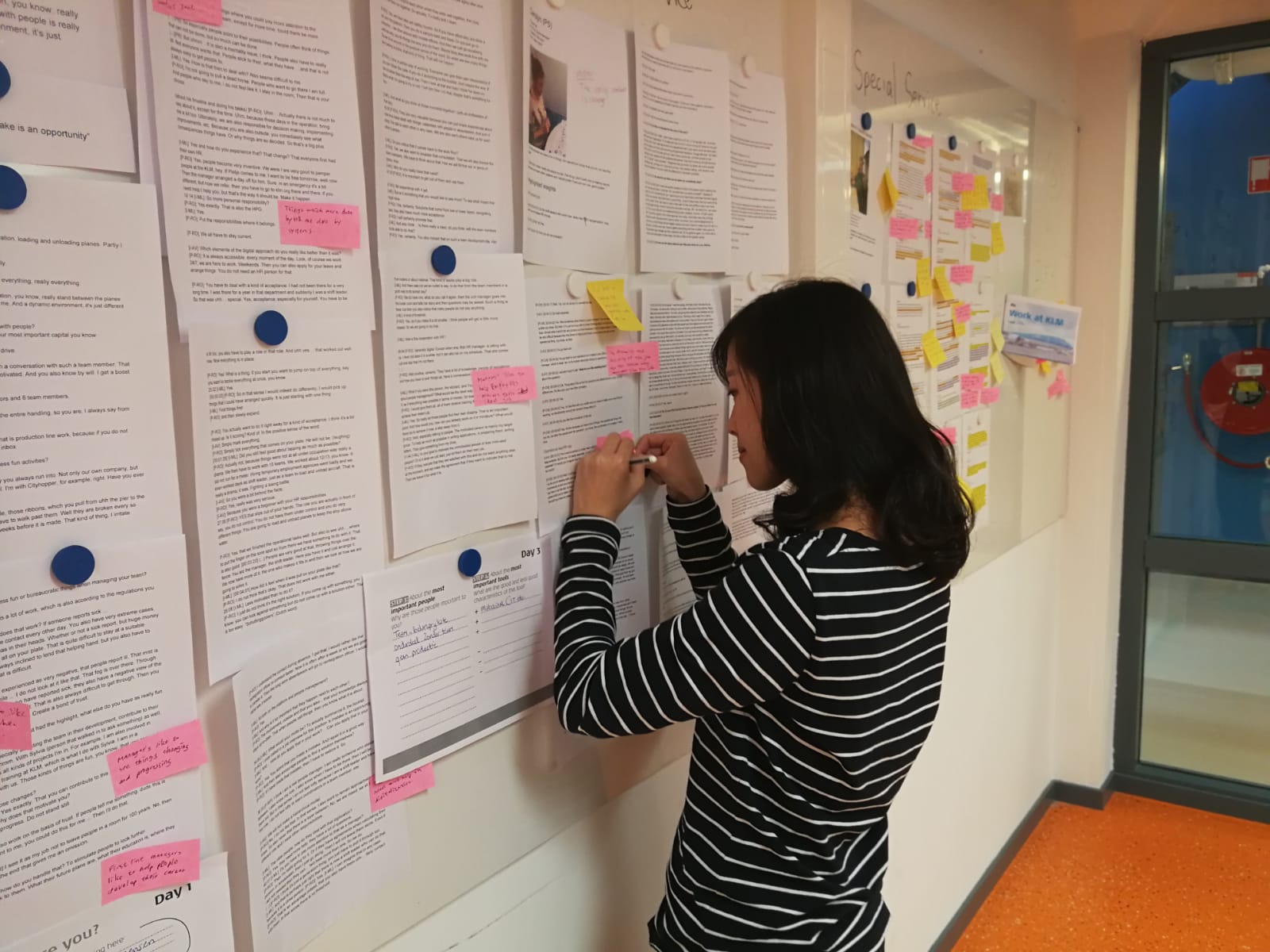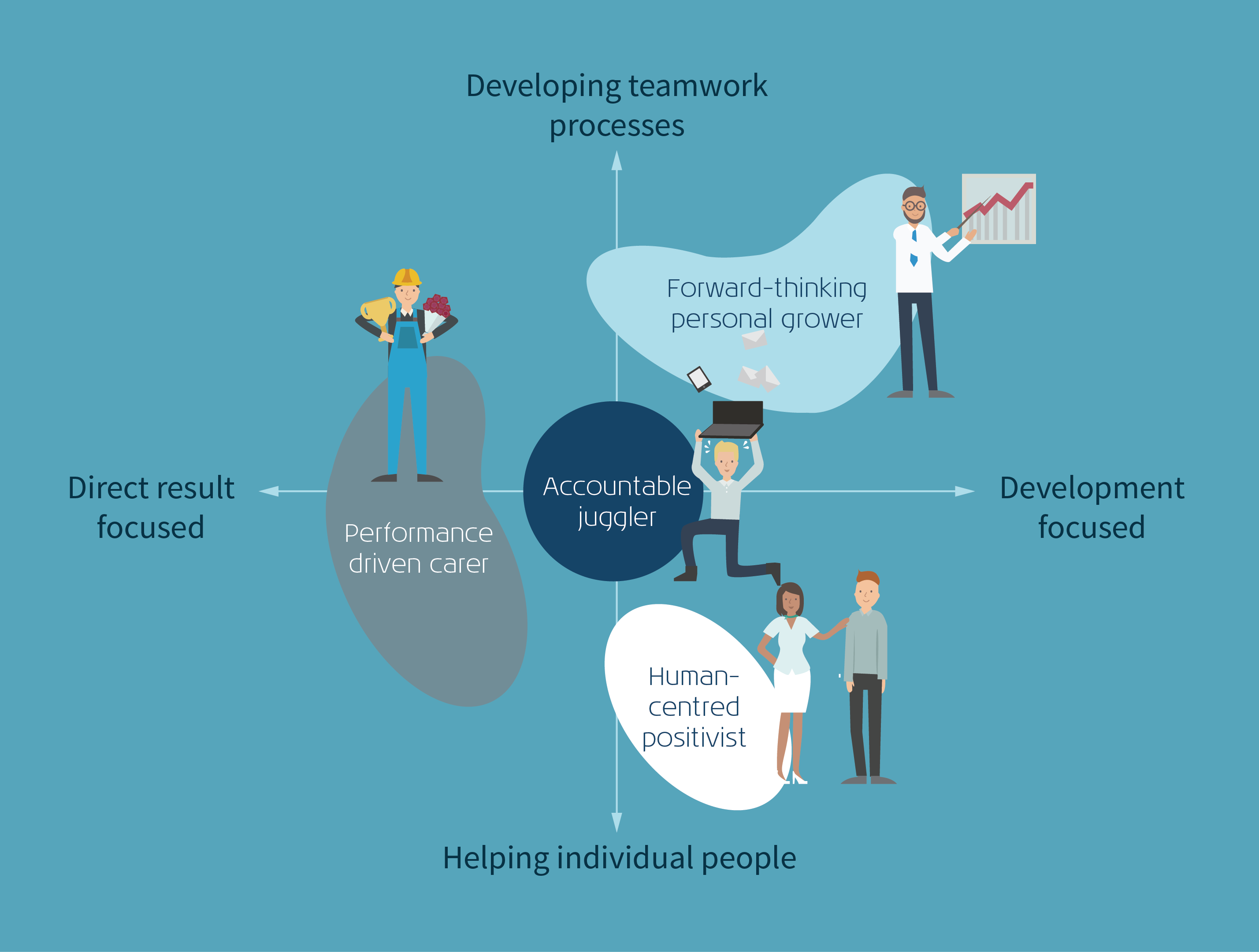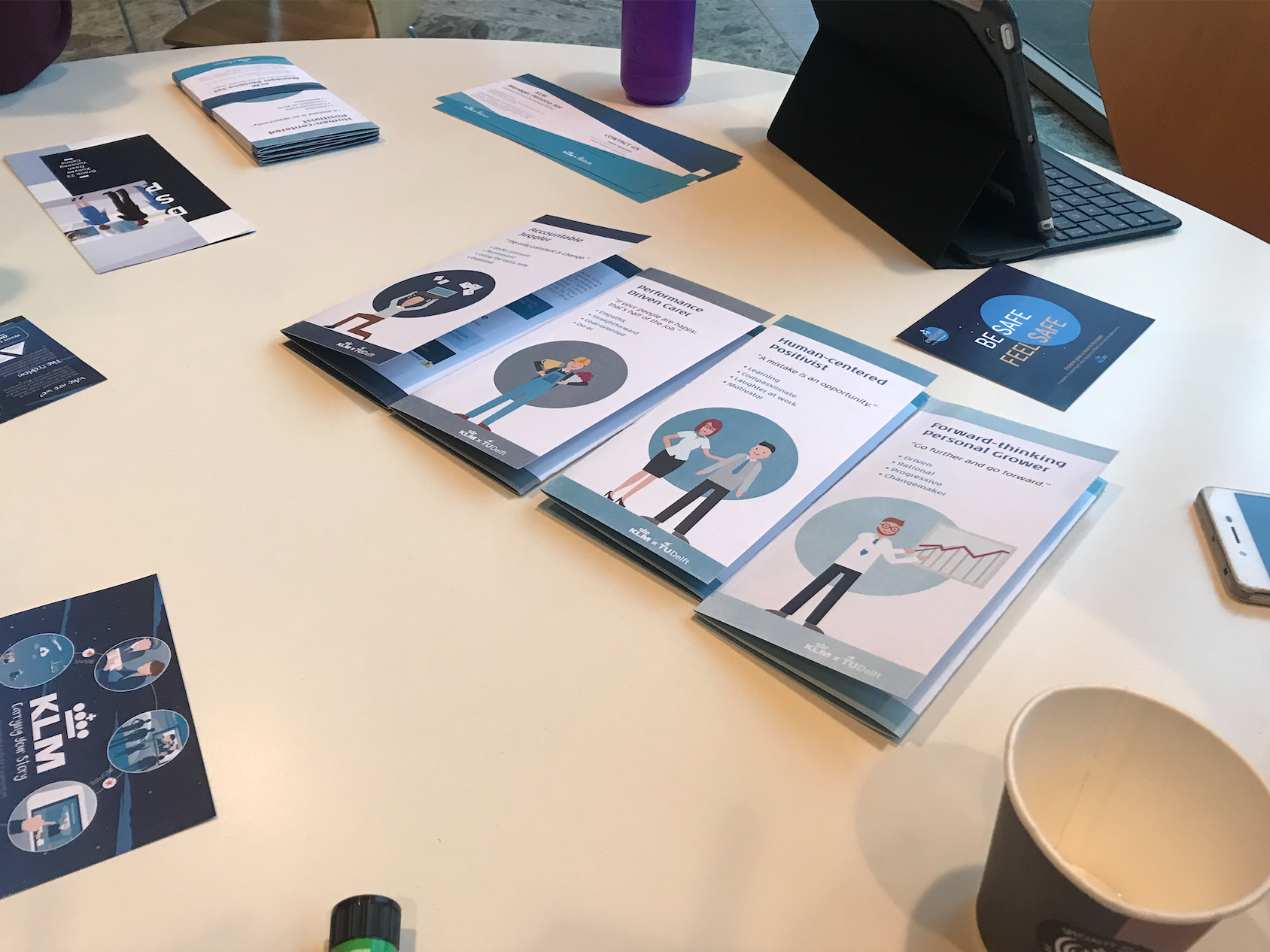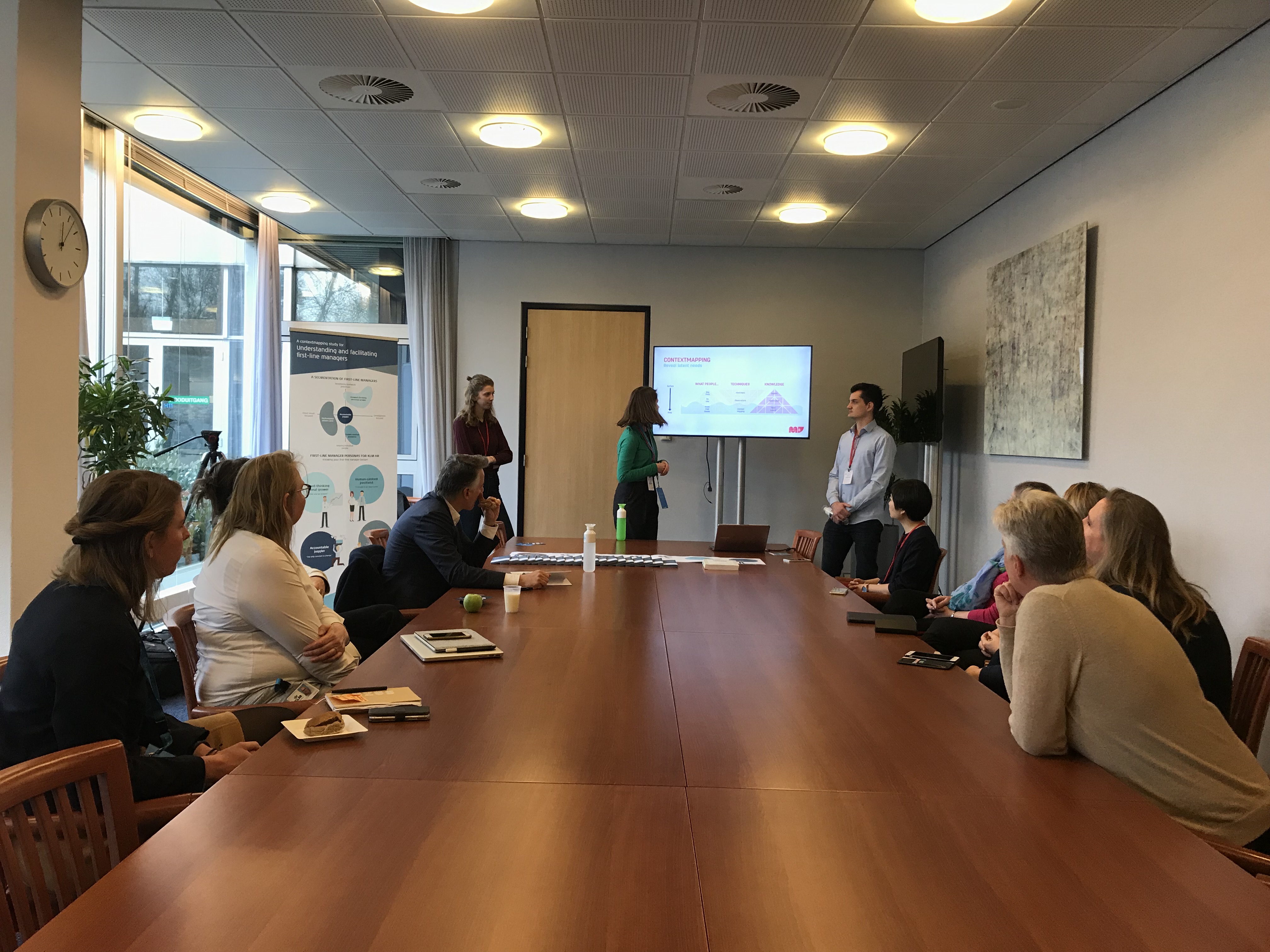Generate personas of first-line manager by context-mapping
The project was assigned by KLM HR managers. The goal is to help KLM HR understand the first-line managers in Cargo, Engineering & Maintenance and Ground Service, including their motivations, frustrations, needs and wishes. The deliverable of the project is a brochure of personas of KLM first-line managers.
| Work Type: | Group work, collaborated with Alex Veenstra, Hao-Yung Chang and Marjolein Los |
|---|---|
| Client: | KLM Royal Dutch Airlines |
| Publish Date: | January 2019 |
| Subject: | KLM First-line Manager |
| Approach: | Context-mapping |
Appraoch
Context-mapping
Context-mapping is an approach that brings people we serve directly into the design process to reach deeper levels of knowledge and to support empathy with the end-users. This approach contains three elements:
- Sensitising people: making people sensitive for their experience
- Making use of generative tools: using generative techniques to make the implicit more explicit
- Used for design purposes: it is an approach for designing not researching; the aim is to come with new solutions
Step 2
Participant Recruitment
Nine participants were carefully selected from the three target divisions. The principle of the selection was to have both male and female, young and old managers.
Step 3
Sensitising
Participants received a sensitising booklet a week before the session. There were different exercises on the booklet, aimed to guide participants to reflect on the certain topics and be prepared for the interview. This booklet was designed for them to fill in each working day around five to ten minutes.

Step 4
Generative Session
After participants filled in the booklet, they one-by-one attended a generative session that included an interview and an exercise.
In the interview, participants were asked about what they wrote in the booklet and the reasons behind. In the exercise, participants used the avatars, texts and lines to answer a rather abstract question. The purpose was to evoke their
inspiration and creativeness.
Step 5
Analysis
In the analysis phase, the recordings were transformed to data and then to usable information. The process is shown below:
Transcription & Statement Card
Structure
After all the statement cards were made and collected, the differences between the nine participants, in terms of their attitudes and mindsets, became clear. A ‘structure’ was created to classify the differences of the participants, all of the participants were put on the four quadrants.
In order to create simple and clear personas, we clustered some of the participants who were in close positions, and four personas emerged in the end.
Theme
After personas were defined, several themes, such as motivation, frustration and expectation, were created to describe the personas. To better communicate them to the clients, the personas were made into a brochure.

Step 6
Communication
Manual
Interactive Presentation
Instead of a formal presentation, we held an interactive presentation to communicate the results. In this interactive presentation, we first introduced the four personas, and then we let clients play a game in which they had to guess ‘which the persona it is’ based on a short description. By playing this small game, we ensured clients fully understand the personas, the final deliveries of the project.

